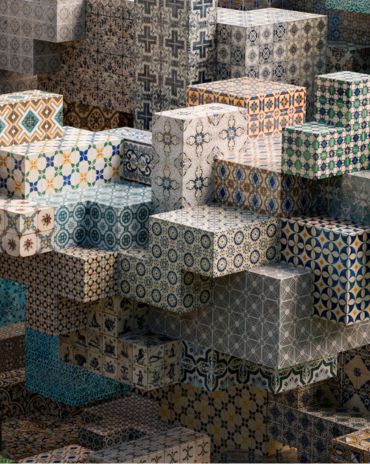Copyright © 2025 Motivate Media Group. All rights reserved.
YSG Studio collaborates with Tappeti to create artisanal rug collection inspired by Egypt’s pharaonic past
The 12-piece collection has been designed by Egyptian-Australian designer Yasmine Ghoneim
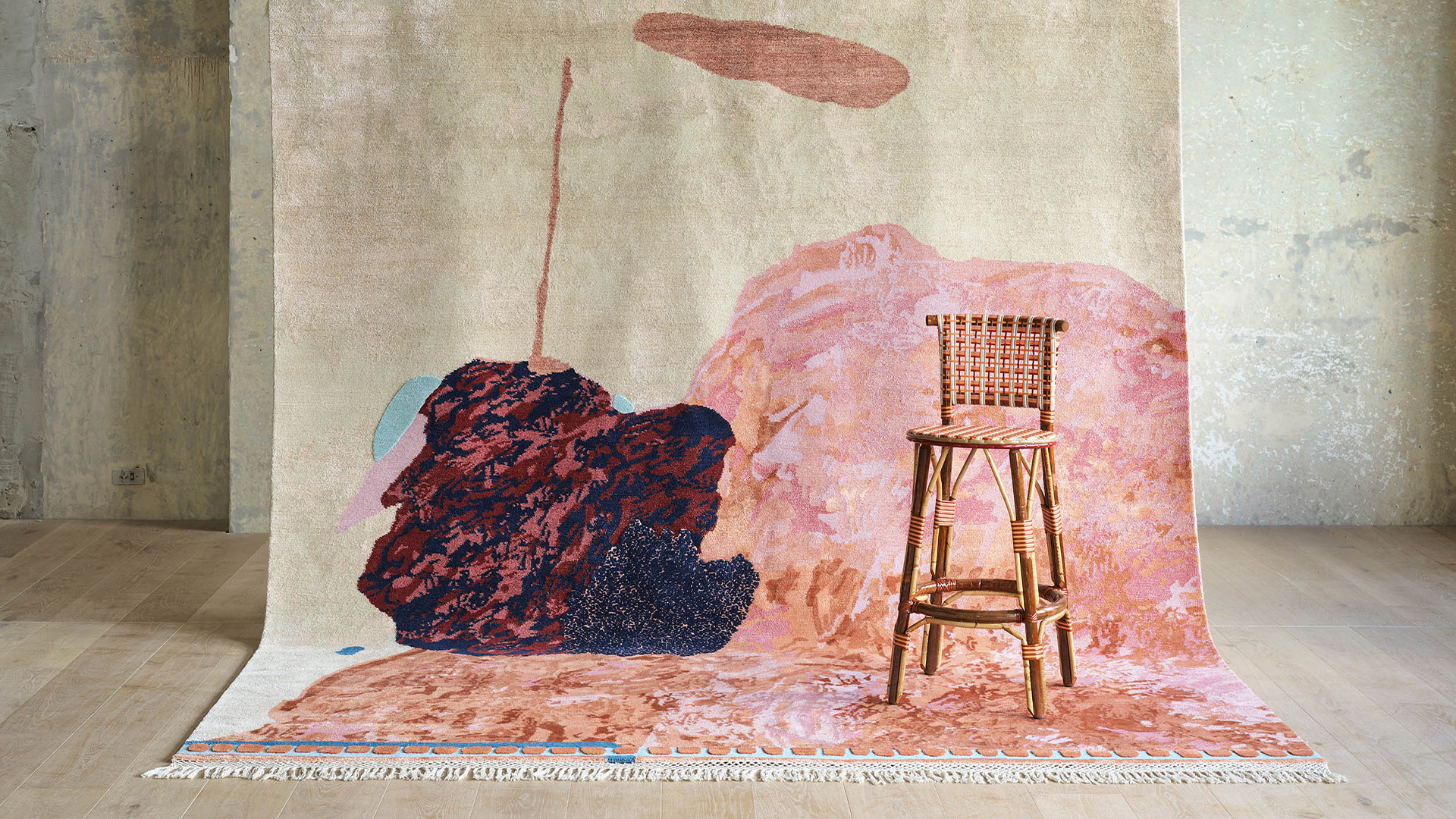
A collaboration between YSG Studio and Tappeti has given birth to a 12-piece artisanal rug collection inspired by Egypt’s pharaonic past. We speak to YSG Studio founder, Yasmine Ghoneim about the influences and techniques behind it.
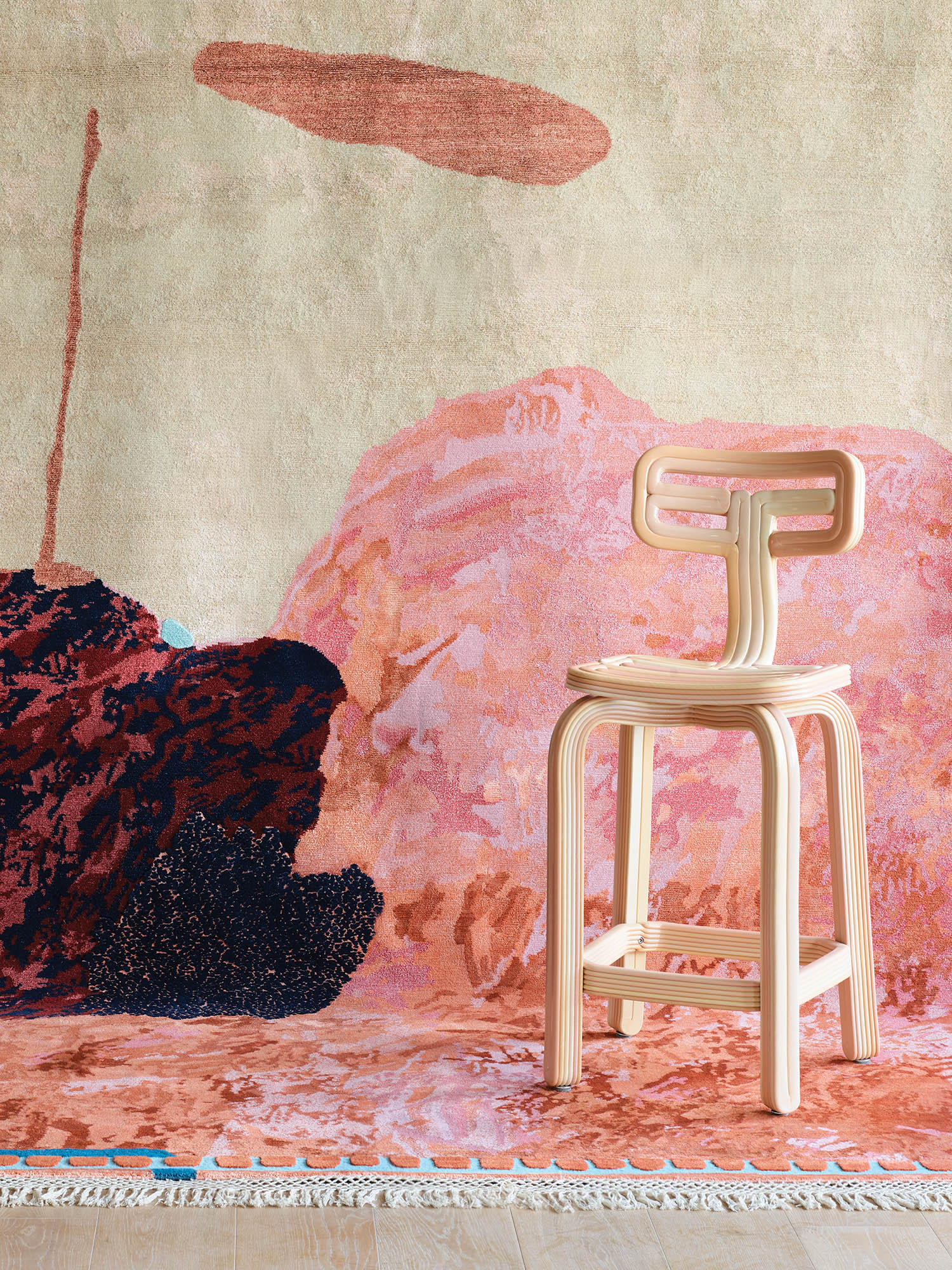
Can you tell us more about your collaboration with Tappeti and how it has led to the launch of your first collection together? I’ve worked closely with Tappeti for several years, designing custom rugs and carpets for clients, so when Karinna Gobbo (Tappeti’s founder and CEO) asked me to collaborate with her, it was a no-brainer. For this 12-piece range, I was given incredible design latitude. The collection packs punchy patterns, unique border designs, plus feature motifs, icons, symbols and abstract landscapes inspired by my half-Egyptian heritage and belief in the power of magic.

Why did you choose to go back to your heritage for the inspiration behind the collection? It was more an instinctual design direction. The inspiration came when I was visiting my brother in Berlin just after the lockdown lifted in 2021. I visited the Egyptian Wing of the Neues Museum, which inspired the collection. David Chipperfield’s minimalist design approach to the renovation of the museum also really struck me. It’s a piece of architectural sorcery, as it shows how a modernist can take a major historic building and bring fresh life to it without losing the old fabric, its charm and its ghosts. That idea struck a chord with me. I wanted to infuse this collection with where I came from – but in a more contemporary way.

Can you tell us more about the elements of ancient Egypt that inspire you and how this has been translated in the designs? It’s the landscapes of Egypt that inspired many of the designs. Bolder elements include a constellation of Seba stars flickering across a decadent midnight blue sky; [these] adorn the ceilings of tombs… [and] represent guidance to the souls of the departed on their journey to the Afterlife. That journey has always been a huge inspiration for me. To have it forever imbued in a rug, well that’s special. Other designs include rippled outlines recalling sand dunes, whilst checkerboard cut-out borders are a modern take on traditional patterns. Some references are more literal, like giant sarcophagi feet with twinkling gold toes grounding a rug. Combined, the rugs reference ancient Egyptian deities (all the rugs are named after them) plus the promise of the Afterlife, yet they’re infused with a distinctly contemporary feel [through] their playful nature and bold palettes.
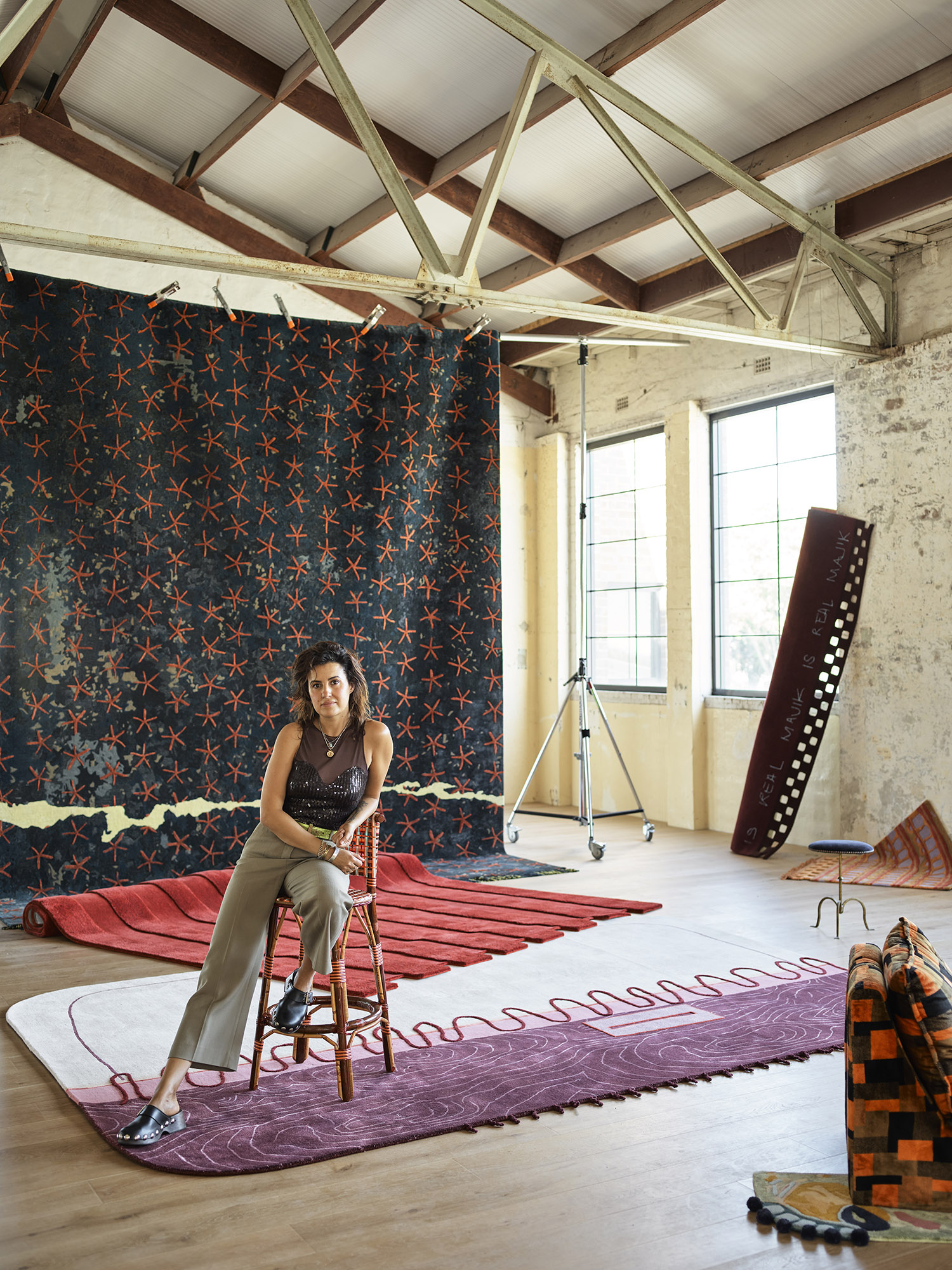
Yasmine Ghoneim, founder of YSG Studio
Tell us more about your pigment choices and forms? Some are compellingly reductive, like the monochromatic red carpet with undulating pile heights inspired by the Red Sea, while classic bright Lapis Egyptian blue hues feature on some rugs, but you’ll also find lilacs, pinks and eggplant shades too. After creating initial pencil sketches, I started playing with water-coloured versions with my team, to determine tonal combinations. That’s why several in the collection have a really expressionistic quality to them that Tappeti’s incredible weavers could translate so exquisitely by hand. Some feature colour-blocking elements plus watercolour-like forms dolloped upon neutral backdrops. Tappeti’s toxin-free dyes are created from small-batch pot-dying techniques which provide stronger colours and higher lustres than mass-batch-dying methods.
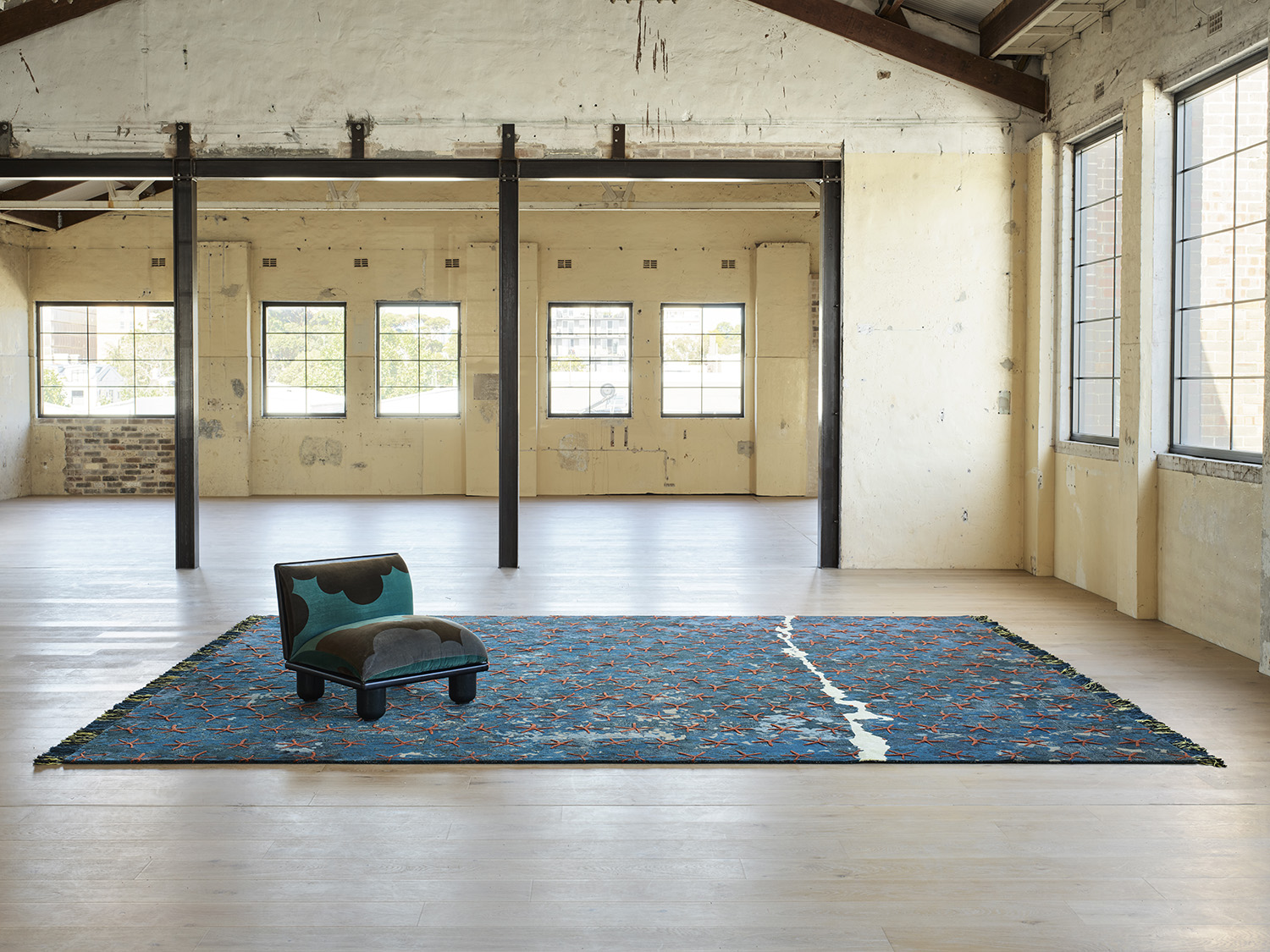
Can you tell us more about the artisanal aspect of the rugs? Rugs tend to either have short, fringed tassels at either end or a neat finish, so I played with alternatives – from rounded edges and corner baubles and tassels to cut-out chequerboard reliefs; so, you have a wonderful dappled effect between rug and floor finish. Several combine exaggerated uneven pile heights that melt underfoot, plus intricate raised details. Each rug incorporates a mix of fibres. Combinations of art silk [artificial silk], hemp, Tibetan highland wool and nettle feature in the intricate hand-knotted rugs to reveal an exquisite level of pattern detail, while New Zealand wool and art silk articulate the hand-tufted pieces to achieve various lustrous textures through a mix of loop and cut piles. I’m equally impressed with the way Tappeti weaves ethics and environmental sustainability into their business. Traditional makers in India and Nepal produce each piece using time-honoured looming and tufting techniques, and are paid fair wages, enabling them to work amongst their traditional community. Also, every rug can be customised in terms of size and even colour preferences if desired.
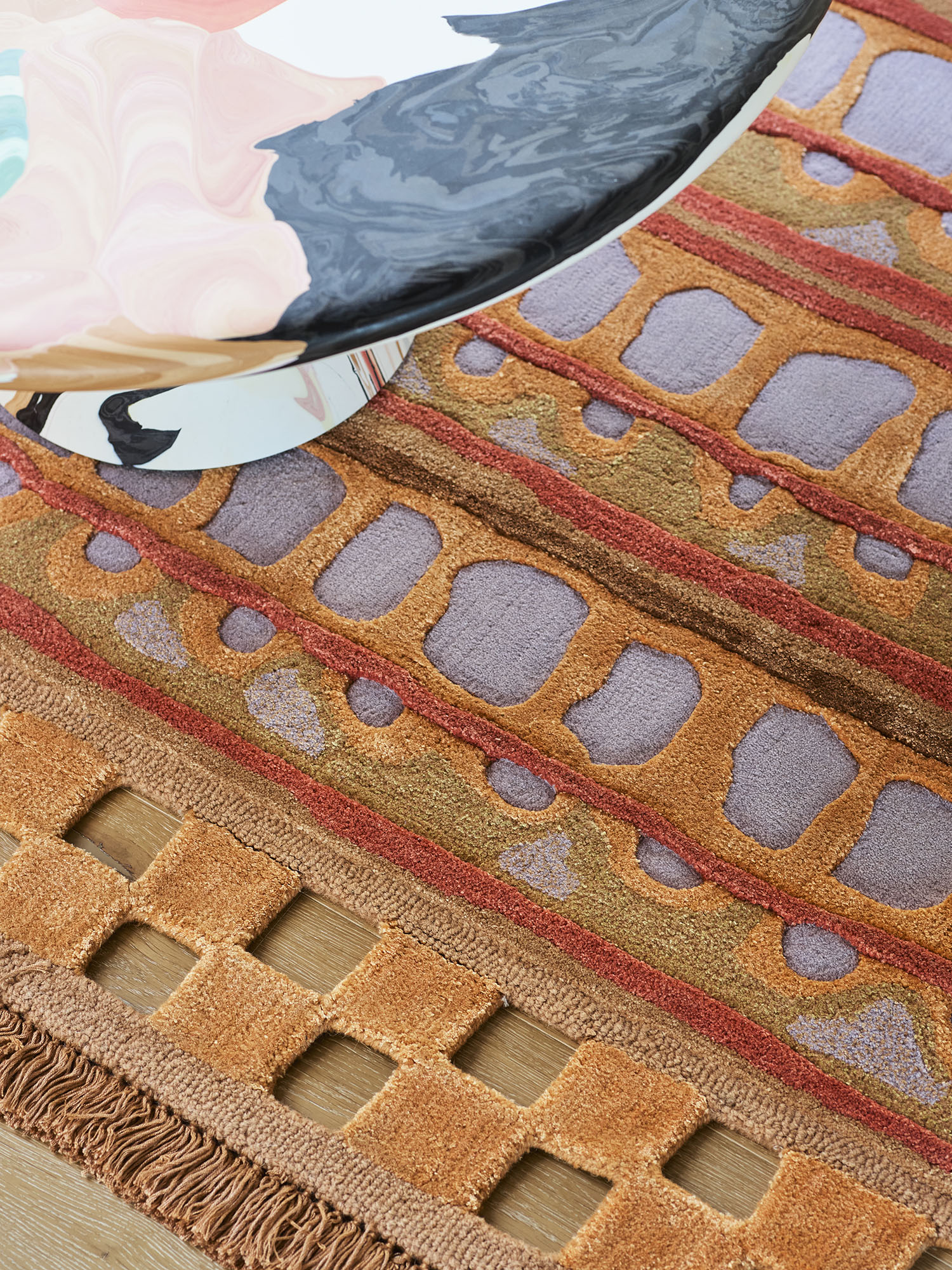
What does the name ‘Real Majik’ mean to you? I’m a big believer in the unknown, that things happen for a reason. Majik is always responsible for life’s incredible moments. If you really stop to listen, it’s literally everywhere. I want the rugs to wield that power for everyone who owns one. I can’t guarantee they’ll ever fly, but I want people to believe that they just possibly could.
Photography by Anson Smart
The Latest
Maison Aimée Opens Its New Flagship Showroom
The Dubai-based design house opens its new showroom at the Kia building in Al Quoz.
Crafting Heritage: David and Nicolas on Abu Dhabi’s Equestrian Spaces
Inside the philosophy, collaboration, and vision behind the Equestrian Library and Saddle Workshop.
Contemporary Sensibilities, Historical Context
Mario Tsai takes us behind the making of his iconic piece – the Pagoda
Nebras Aljoaib Unveils a Passage Between Light and Stone
Between raw stone and responsive light, Riyadh steps into a space shaped by memory and momentum.
Reviving Heritage
Qasr Bin Kadsa in Baljurashi, Al-Baha, Saudi Arabia will be restored and reimagined as a boutique heritage hotel
Alserkal x Design Miami: A Cultural Bridge for Collectible Design
Alserkal and Design Miami announce one of a kind collaboration.
Minotticucine Opens its First Luxury Kitchen Showroom in Dubai
The brand will showcase its novelties at the Purity showroom in Dubai
Where Design Meets Experience
Fady Friberg has created a space that unites more than 70 brands under one roof, fostering community connection while delivering an experience unlike any other
Read ‘The Winner’s Issue’ – Note from the editor
Read the December issue now.
Art Dubai 2026 – What to Expect
The unveils new sections and global collaborations under new Director Dunja Gottweis.
‘One Nation’ Brings Art to Boxpark
A vibrant tribute to Emirati creativity.
In conversation with Karine Obegi and Mauro Nastri
We caught up with Karine Obegi, CEO of OBEGI Home and Mauro Nastri, Global Export Manager of Italian brand Porada, at their collaborative stand in Downtown Design.














